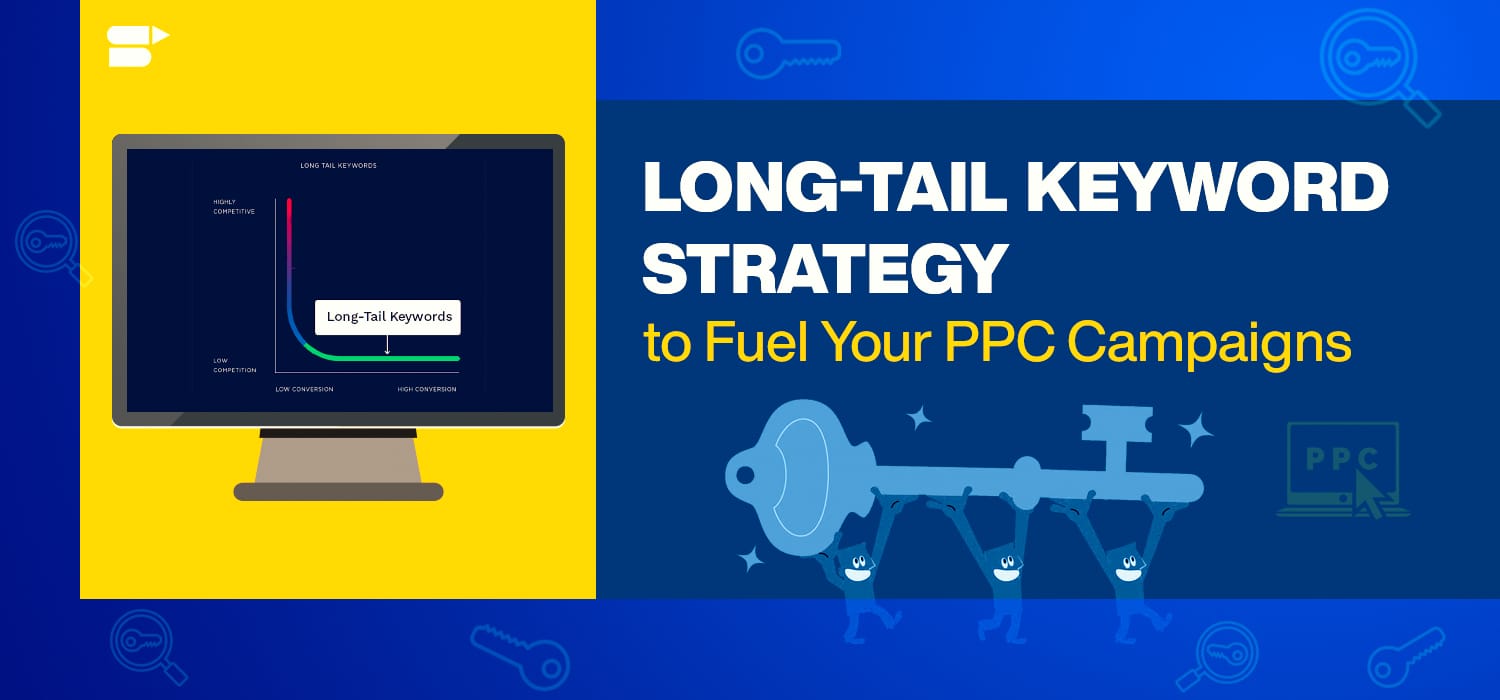Abandoned Shopping Carts: Why Shoppers Leave and How Sellers Can Win Them Back
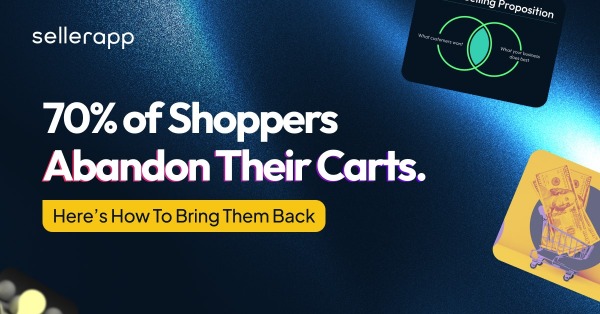
Did you know that the average abandoned shopping carts rate across e-commerce is around 70%? That essentially indicates that seven out of ten customers walk away without buying.
Have you wondered what abandoned shopping carts are in the first place? As it’s what it specifically implies for you, the seller?
It’s the moment when a shopper is scrolling through their screen, finds something interesting, adds that item to their digital cart, but leaves your site before completing the purchase.
However, it’s unfortunately more than just a poor metric or a statistic; the sellers are affected by loss of revenue, wasted ad spend, and a potential customer slipping through the cracks.
The reasons could vary, whether it’s unexpected shipping costs, slow page loads, or checkout friction, abandoned shopping carts represent one of the most persistent challenges in digital commerce that sellers face.
Not just lost sales, it disrupts your inventory planning, clouds your attribution models, and distorts your customer journey analytics.
If you want to know how to reduce abandoned shopping carts, understand the causes behind them. A customer might be comparison shopping; they are comparing the prices of products from different brands, they might be uncertain about your returns policy, or they might simply be distracted by a text. Whatever the reason, your job is to understand that exit before it happens.
That’s where cart abandonment solutions come in, tools and strategies designed not just to recover lost carts but to prevent abandonment in the first place.
What Are Abandoned Shopping Carts?
A customer adds products to their online cart but leaves the website before completing the purchase. These are abandoned shopping carts. Sounds simple? For e-commerce businesses, it is one of the most frustrating and costly problems in the conversion funnel.
A seller has done everything to bring that shopper in with targeted ads, SEO, product photos, and persuasive copy, and they were just one click away. Then the shoppers vanish. There is no order, no revenue, just abandoned shopping carts left behind in your analytics.
This is where the difference between physical and digital abandoned shopping carts becomes critical. In a brick-and-mortar store, someone walking away from a full cart is rare and usually signals something extreme.
But in e-commerce, cart abandonment is incredibly common and often emotionally subtle. A customer might intend to buy later, compare prices elsewhere, or simply get distracted. In the digital world, abandoning a cart takes zero effort, no awkwardness, no clean-up, just a browser tab closed in an instant.
And the numbers speak for themselves. An average of 70% online shopping carts are abandoned, which indicates that most customers leave before completing their purchase. So it is not just a coincidence, it is a pattern that follows, and it’s telling you something’s off. Maybe your pages take too long to load.
Maybe your shipping fees show up too late in the process. Maybe customers just aren’t sure if they can trust your store with their card details. Whatever the reason, these little points of friction quietly pile up. And before you know it, they’re driving up your digital shopping cart abandonment rate and draining revenue you should’ve captured.
For businesses, the effects of digital shopping cart abandonment go far beyond that single missed sale. When shoppers add items to their cart but don’t follow through, it doesn’t just affect today’s sales; it throws off your entire forecast.
The more abandoned carts pile up, the harder it becomes to trust your sales projections. You might think demand is high based on cart data, but without conversions to back it up, you’re left guessing. Also, guesswork can be dangerous especially when you are planning inventory, running ad campaigns, or projecting your revenue.
A customer walking away with no orders placed, can raise questions about your site design, your messaging, your shipping policy, and even your mobile optimization. It also means your remarketing efforts have to work harder.
Cart recovery emails, retargeting ads, and timely offers are the tolls that can help bring a shopper back before they completely forget about their purchase. These tools can help the shoppers reopen the site as they don’t always win the sale on the first try and that’s often all you need.
The abandoned shopping carts software and other cart abandonment solutions are no longer optional for serious sellers.
The tools will help you identify drop-off points, retarget with context, and recover revenue that would otherwise be lost.
Because in the end, there are two stories that every abandoned shopping carts tells: first, what your customer wanted, and second, the exact point where something made them hesitate.
Your job as a seller is to figure out what that something is and fix it before the next shopper disappears too.
Top Reasons for Abandoned Shopping Carts
1. Unrealistic costs at checkout
The first step in fixing the problem is figuring out why customers leave their digital cart empty. From a distance, the cause may appear clear, but the data shows a pattern that requires attention.
The biggest reason by far is unexpected costs. According to Baymard Institute, nearly 48% of online shoppers abandon their carts because of extra charges they were not prepared for shipping, taxes, or service fees that only appear at the final step. It is not the price they mind. It’s the surprise.
Shoppers don’t like feeling tricked, and even something as small as a late-stage shipping cost can instantly destroy trust.
2. Complicating the checkout process
Another major reason is a complicated or time-consuming checkout process. Almost 17% of shoppers will abandon a cart simply because the process feels complicated to them. Does your checkout has too many fields, unnecessary steps, or require account creation without a guest option? Then you are silently pushing customers away.
In digital shopping, friction equals failure. Streamlining the experience isn’t just about convenience; it’s about conversion.
3. Lack of trust
Then there’s trust, or the lack thereof. Around 18% of users are hesitant to complete their order because they don’t trust the site with their payment details. This can happen especially for lesser-known brands or newer stores. Make sure your checkout page has SSL security badges, clear return policies, or customer reviews, so that the shoppers don’t have to take a leap of faith.
4. Poor mobile experience
Poor mobile experience is another invisible killer. With more than half of e-commerce traffic coming from mobile devices, if your site isn’t optimized for smaller screens, you are leaking potential revenue daily. Cart abandonment online shopping rates are higher on mobile than desktop, for this reason alone. Responsive design, autofill support, and fast load times matter more than you think.
5. Comparison shoppers
And never underestimate comparison shopping. There is a pattern that most shoppers follow: they open multiple tabs, compare prices, wait for better deals, or even use your site for research only to buy elsewhere. Cart abandonment isn’t always about what’s broken; it’s often about what’s missing. That is where smart cart abandonment solutions come in, from urgent responses to cart abandonment emails that make sure to remind users of what they left behind and why they wanted it in the first place.
That’s why advanced sellers invest in shopping cart abandonment software and behavioral analytics. Because you can’t recover what you can’t see. And every abandoned cart you fail to follow up on is not just lost revenue, it’s a customer who might never come back.
Proven Cart Abandonment Solutions
Here are three proven cart abandonment solutions that go beyond quick fixes.
1. Simplify the checkout process
One of the most effective ways to reduce abandoned shopping carts is to simplify the checkout process. If your customer has already chosen the product, any extra step at checkout is a barrier. Long forms, account creation, unclear progress indicators, all these lead to frustration and exits.
A single-page checkout, with guest checkout enabled and mobile-first design, is often all it takes to keep the user moving. If you provide a smoother experience, you can expect a lower abandonment rate. Even though it t sounds obvious, but the execution is where most sellers slip.
The brand, Gymshark, a major fitness apparel brand, has reduced cart abandonment by nearly 20% after switching to a one-page checkout that pre-filled user info and allowed Apple Pay for mobile shoppers. Small friction removals, big wins.
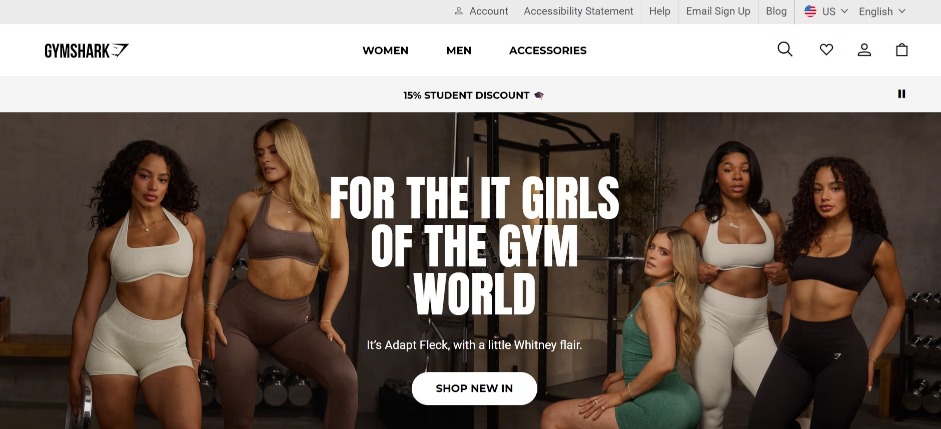
2. Build Real Trust
Then comes trust. This isn’t about overly flashy badges, it’s about creating the feeling that you’re a real, reliable brand. Shoppers abandon their digital shopping carts when they feel unsure. Is this site secure? Can I return this easily? What if I am charged a hidden fee? Displaying trust signals, including SSL certificates, secure payment icons, clear return policies, and customer reviews, especially at checkout, can significantly reduce abandonments. If the shoppers are in doubt, it is more likely that they won’t make the purchase.
Take an example of Allbirds, the sustainable footwear brand, which puts its no-questions-asked 30-day return policy right in the cart and checkout. It is important to understand that it’s not just about what you say, it’s where you say it. Allbirds trust-focused checkout experience is one reason their cart abandonment rate sits far below the industry average.

3. Offering Transparent Prices
Pricing transparency also plays a massive role. You are not just being generous by offering free shipping or free returnsyou are about to remove decision anxiety from your customer.
If you can’t offer free shipping sitewide, anchor it into your messaging: Free shipping over X or Easy 7-day returns creates clarity and confidence. Buyers are more confident while making the purchase when they know they can change their minds later.
Think about how Zappos built its brand on this model. Their 365-day return policy on most items not only reduced cart abandonment, but it also skyrocketed customer lifetime value because users felt zero risk.
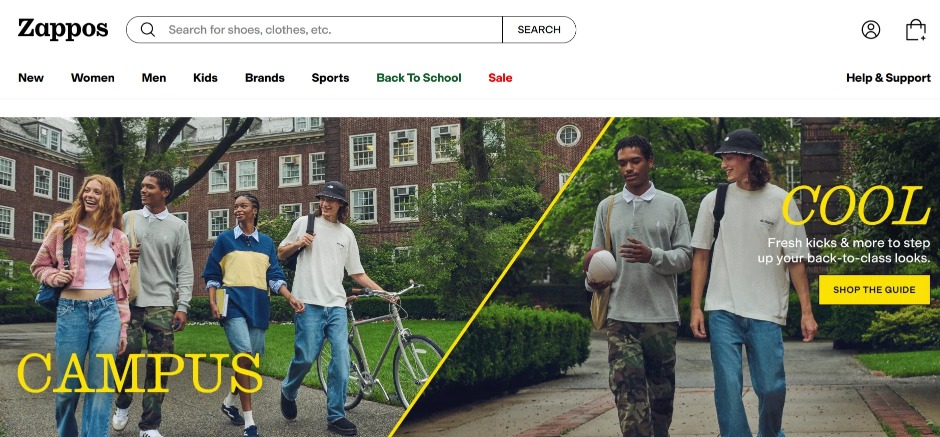
And this is where SellerApp’s automation engine gives sellers a serious edge. The platform helps in optimizing your product listings, segmenting audiences, and using SellerApp allows brands to connect with buyers at exactly the right moment.
You will find an increase in click-through rates, boosts conversion rates, and drastically reduces your cart abandonment rate. It’s not just automation, it’s personalization at scale, powered by real behavioral data.
Shopping cart abandonment tools
1. In terms of shopping cart abandonment software and tools, there’s no shortage of effective platforms. For email automation Tools like Klaviyo, Omnisend, and Drip are widely used. They allow you to build flows that re-engage cart abandoners within minutes, often recovering 10-20 percent of lost revenue.
2. What makes these platforms truly effective is their ability to customize recovery flows based on shopper behavior. You can A/B test subject lines, timing, and content. For instance, Klaviyo allows you to send personalized dynamic product blocks based on what was left behind. Pair this with urgency triggers like a time-limited discount or a low stock message, and you immediately lift engagement. According to Klaviyo’s benchmarks, abandoned cart flows with personalized product recommendations see 25-40% higher CTRs than generic reminder emails.
3. Shopify users have access to built-in cart abandonment flows, but third-party apps like ReConvert, CartStack, and PushOwl take it further with exit-intent popups, web push notifications, and A/B testing capabilities.
4. The goal isn’t just to recover the cart. It’s to understand why it was abandoned in the first place and remove that friction for the next visitor. You will need the right tools, a little creative strategy, and a platform like SellerApp doing the heavy lifting, abandoned shopping carts recovery becomes less of a worry. A repeatable, scalable, data-driven system that adds real money back to your business, without chasing your tail.
What is a good abandonment rate for an online shopping cart?
The industry average tells a tough story. Studies from the UX authority Baymard Institute show that the average shopping cart abandonment rate sits at around 70 percent. That means for every ten people who add a product to their digital shopping cart, only three complete the checkout.
So what’s considered good? A good cart abandonment rate usually falls somewhere between 55 and 60%, depending on the vertical. That range signals that your checkout experience, pricing transparency, trust factors, and cart abandonment solutions are working better than most. If you’re under 50 percent, you’re not just good, you are outperforming the majority of the market.
That said, even a 60 percent abandonment rate means you are losing six out of ten warm buyers at the final step. That’s where cart abandonment recovery strategies become critical. Whether you’re using targeted cart abandonment emails, shopping cart abandonment software, or dynamic retargeting ads powered by platforms like SellerApp, your ability to reconnect with those lost customers determines how much money you win back.
What percentage of online shopping carts are abandoned?
The short answer? Roughly 70 percent. That’s the current global average shopping cart abandonment rate based on aggregated data from dozens of major studies across industries. This means that out of every ten online shoppers who add a product to their digital shopping cart, seven leave without buying.
It’s a staggering number, but for sellers, it’s also the reality of digital commerce today. And depending on the device and industry, the number can climb even higher. For example, cart abandonment in online shopping on mobile is typically worse due to smaller screens, slower connections, and less intuitive UX. In some cases, mobile abandonment can reach 85 percent.
What is the abandoned cart theory?
The abandoned cart theory is the idea that online shoppers often use their digital shopping carts in a very different way than they would in a physical store. In traditional retail, adding something to your cart is a clear sign of purchase intent. However, it is frequently only a part of the browsing experience in e-commerce. Using a digital shopping cart can serve as a temporary storage space, a tool for comparing prices, or a means to bookmark goods that you like.
This change in behaviour helps to explain why the average shopping cart abandonment rate is so high, roughly 70% worldwide. By emphasising that not all cart abandonment is a sign of rejection, something that many sellers find concerning when they observe a stack of abandoned carts, the concept reframes the issue. It frequently indicates delay, hesitation, or preoccupation. And that’s an opportunity, not a dead end.
How to Reduce Shopping Cart Abandonment with Email Automation
One of the most powerful tools in this space is the cart abandonment email. These aren’t just reminders, they’re digital nudges designed to bring shoppers back into the funnel with relevance, empathy, and urgency.
According to research by a popular email automation tool, Klaviyo, abandoned cart emails can recover up to 20 percent of lost sales when they’re well-timed and personalized.
Even more compelling? Open rates for cart abandonment emails often exceed 40%, with click-through rates averaging 8-10%, far above most email benchmarks.
But timing is everything. The first cart abandonment email should be within the time frame of 30-60 minutes after they leave your site.
The shoppers are still thinking about your product, so a 24-hour follow-up could contain more convincing content, such as a review, a time-limited deal, or a phone call from customer support. And if you want to communicate urgency or perhaps a small reward, a third email may be sent if necessary, but it should be subtle and unobtrusive.
For sellers, the bottom line is simple. Abandoned shopping carts aren’t dead ends. With the right automation tools, the right message, and the right moment, they become some of the highest-intent customers in your business.
Examples of Effective Abandoned Cart Recovery Campaigns
Smart brands don’t let the opportunity to recover revenue slip away, as every abandoned shopping carts is a chance to recover revenue.
Even if it’s a subtle email, a limited-time offer, or a remarketing ad that shows up just when the buyer is indecisive about their purchase. The abandoned cart recovery campaigns share one thing in common: they meet the customer where they are, with exactly what they need to take the next step.
Let’s take a look at how leading e-commerce brands turn abandoned carts into completed checkouts and then break down the exact strategies you can use in your store.
Example 1: Amazon – Personalized Reminders With Zero Friction
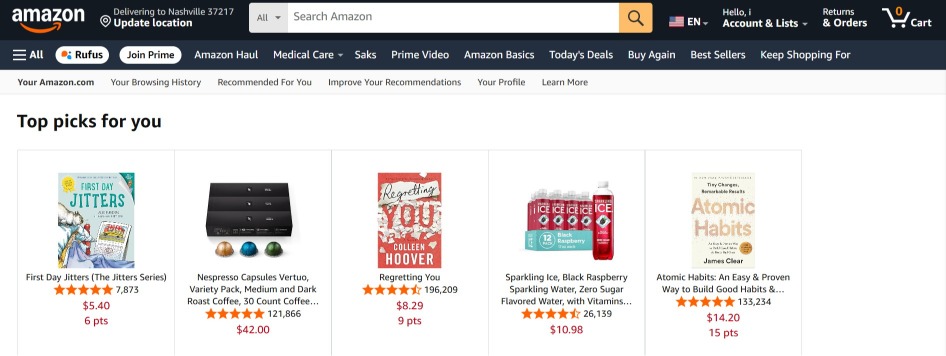
Amazon doesn’t send flashy abandoned cart emails. Instead, it leans into what it does best: personalization and persistence. What Amazon does is if you leave something in your digital shopping cart, Amazon will send gentle reminders that feel more like helpful reminders than sales pushes.
They’re short, visual, and often integrated in other touchpoints like homepage banners or the app notification center. Amazon also pairs this with real-time inventory alerts like “Only 2 left in stock,” triggering urgency without hard-selling.
Example 2: ASOS – Smart Incentives and Visual Storytelling

ASOS is known for its clean, engaging emails, but its cart recovery flow is particularly sharp. If a shopper leaves behind a cart, the first email is a visual with product images and a witty, brand-consistent headline like “Your bag is crying.” If the shopper still doesn’t respond, ASOS follows up with a subtle discount in the second email, often time-limited to create urgency. And their final reminder is simple: a mobile-optimized, one-click path back to checkout.
Example 3: Nike – Retargeting with Personalized Ads
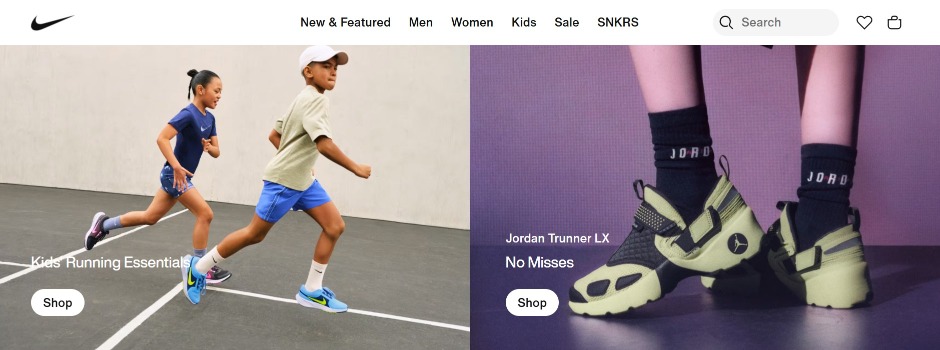
Nike doesn’t rely solely on email. Their abandoned cart recovery strategy includes dynamic retargeting ads that follow users across platforms. If you add a pair of shoes and leave, you’ll likely see those same shoes in a Facebook ad or Google display banner within 24 hours. These ads are paired with lifestyle imagery or influencer content, reminding shoppers not just of the product but the brand ethos.
7 Strategies to Recover Abandoned Carts
If you want to replicate the success of brands like Amazon, ASOS, and Nike, it’s not about copying their style; it’s about mastering the strategy. Here are seven proven methods to reduce digital shopping cart abandonment and boost recovery:
Use a Trustworthy E-commerce Platform
Customers look for built-in performance with SSL security, and trust features when they check out on platforms like Shopify, WooCommerce, or BigCommerce. By giving the impression that your brand is a stable, secure platform can directly lower the cart abandonment.
Accept Alternative Payment Options
Many users abandon their cart simply because their preferred payment method isn’t available. Make sure you offer wallets like PayPal, Apple Pay, UPI, and Buy Now Pay Later services. Offering flexible payment builds trust and removes friction instantly.
Offer Free or Discounted Shipping
One of the biggest factors influencing the average shopping cart abandonment rate is shipping. Even if you can’t afford free shipping across the board, set a threshold that encourages upselling, such as Free shipping on orders above X.
Highlight Your Returns Policy
A clear and generous returns policy builds trust. Make it accessible not only on your home page but also in the checkout process and shopping cart. Consumers are much more likely to finish the transaction if they are aware that returns and exchanges are simple.
Retarget Cart Abandoners Elsewhere Online
Use platforms like Meta, Google Performance Max, or SellerApp’s smart retargeting campaigns to serve personalized ads across the web. Engaging product ads remind users of what they left behind can bring them back and significantly boost conversion rates.
Optimize Abandoned Cart Emails
Cart abandonment emails work if they’re timed and written right. Send the first email within 30 to 60 minutes of abandonment. Include product images, a simple CTA, and optional urgency (Low stock or Still in your cart).
Offer One-Click Checkout
The faster your customer can buy, the better. Tools like Shop Pay, PayPal Express, or Apple Pay eliminate the need to fill out lengthy forms. One-click checkout doesn’t just improve UX, it directly reduces friction and abandonment on mobile, where most drop-offs occur.
Final thoughts
If you are thinking that abandoned shopping carts are just a metric to track then it is not, they’re a reflection of your customers’ hesitation, doubt, or unmet expectations.
Not just the unexpected shipping costs, an inefficient checkout flow, or a lack of trust signals, every cart that goes unconverted leaves money on the table. But the good news is you can fix this problem.
With the right tools of UX improvements, trust-building tactics, and smart automation, cart abandonment can go from being your biggest drawback to one of your most profitable recovery channels.
SellerApp is helping sellers run targeted cart abandonment campaigns, trigger the right messages at the right time, and test what works so you can drive higher CTRs, stronger conversions, and real revenue growth.
Additional readings:
The Best alternatives to Amazon for Shopping Online in 2025
The Power of Digital Shelf Analytics for E-Commerce Success







